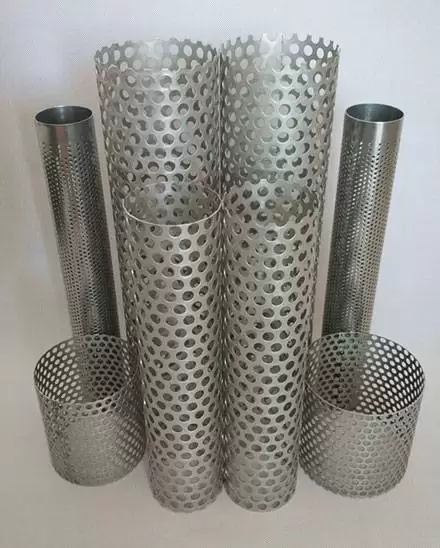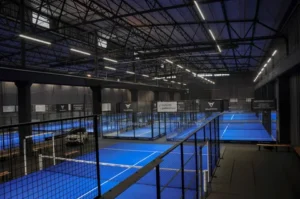How to Choose the Right Perforated Tube for Your Project
Perforated tubes are versatile components used in various applications, ranging from filtration systems to aerospace engineering. Selecting the right perforated tube for your project is critical to ensuring functionality, durability, and cost-effectiveness. However, making the right choice can seem overwhelming with so many options.
In this blog, we’ll explain the key factors to consider when choosing the right perforated tube to meet your specific requirements.
What Are Perforated Tubes?
Perforated tubes are hollow cylindrical components from stainless steel, aluminium, copper, or alloys. They are characterized by uniform perforations (holes) across their surface and are designed to allow the passage of air, liquids, or sound waves while maintaining structural integrity.
These tubes are widely used in automotive, chemical processing, HVAC, and even decorative projects.
Factors to Consider When Choosing a Perforated Tube
1. Material Selection
The material of the perforated tube plays a vital role in its performance. Different materials provide unique benefits depending on the environment and application.
- Stainless Steel: Ideal for corrosive environments due to its high corrosion resistance. Suitable for filtration systems and marine applications.
- Aluminum: Lightweight and cost-effective. Best for applications where weight reduction is essential, such as aerospace engineering.
- Copper and Brass: Great for decorative purposes and electrical conductivity.
- Carbon Steel: Preferred for structural applications due to its strength and affordability.
Select a material that matches your project’s requirements, including environmental exposure, durability, and cost.
2. Hole Pattern and Size
The hole pattern and size of the perforations impact the tube’s functionality.
- Round Holes: The most common and versatile. It is ideal for filtration and separation applications.
- Square Holes: Often used in decorative and architectural projects.
- Slotted Holes: Perfect for applications requiring higher open area percentages, such as airflow systems.
Consider the percentage of open area and how it aligns with your project’s needs for airflow, filtration, or fluid dynamics.
3. Tube Dimensions
The size and dimensions of the tube should align with your project’s specifications.
- Outer Diameter (OD): Ensure the tube’s OD fits seamlessly into your application setup.
- Wall Thickness: Thicker walls provide higher durability and strength but may reduce open area percentages.
- Length: Choose a length that meets your operational requirements while minimizing waste.
4. Application Requirements
Different industries have specific performance needs for perforated tubes. Understanding your application requirements will help you make a better decision.
- Filtration Systems: Look for tubes with smaller perforation sizes to filter out fine particles.
- Sound Attenuation: For mufflers and exhaust systems, select tubes with optimized hole patterns to effectively absorb sound waves.
- Decorative Purposes: Prioritize aesthetic patterns and materials like aluminium or brass for a polished finish.
5. Environmental Conditions
Consider the environment where the tube will be used.
- In corrosive environments, stainless steel or coated materials are preferred.
- Materials like Inconel or stainless steel are suitable for high-temperature applications due to their heat resistance.
- Choose materials with rust-resistant properties in moist environments to prevent degradation over time.
6. Customization Options
If your project has specific requirements, look for manufacturers offering custom perforation designs.
- Custom options allow you to select unique hole patterns, dimensions, and materials.
- Ensure the manufacturer can meet your precise specifications.
7. Cost-Effectiveness
While high-quality perforated tubes can seem expensive, balancing cost with performance is crucial.
- Choose a material and perforation design that meets your requirements without over-engineering.
- Consider long-term durability and low maintenance costs, which may justify a higher upfront investment.
Common Applications of Perforated Tubes
Perforated tubes are versatile and can be used in numerous industries:
- Filtration Systems: Removing impurities from liquids or gases.
- Automotive: As exhaust components and noise attenuation systems.
- HVAC Systems: For optimized airflow and filtration.
- Architectural Design: Decorative elements in building facades and interiors.
- Chemical Processing: For separating substances in complex processes.
Conclusion
Choosing the right perforated tube requires careful consideration of material selection, hole pattern, dimensions, and application requirements. By understanding your project’s unique needs, you can make an informed decision that ensures functionality, durability, and cost-efficiency.
For high-quality perforated tubes tailored to your specifications, trust Vardhman Mill Tubes. Their expertise in manufacturing top-grade perforated components makes them a reliable choice for various industries.














Post Comment